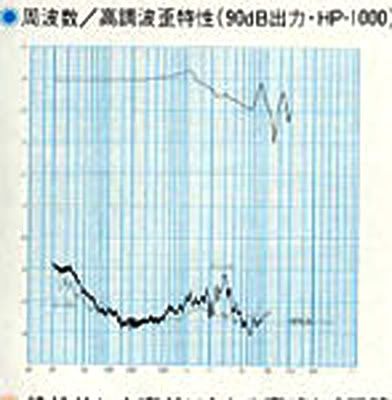What ericj and facelvega said.
As shown in Yamaha's own graph for their SOTA model, the YH-1000, the top end slopes down from about 1kHz up:
Note that the YH-1000 driver is unique among Orthodynamics-- it was factory damped (albeit lightly). So the other Orthos may not have the same curve. My point was to show that even at its very best, Yamaha couldn't deliver flat response in the top octaves.
That's what the 3/4" sticker applied directly to the back of the driver is designed to correct. But this assumes that you've achieved more or less flat response from the bass through the midrange with Stage One. If you're hearing less bass than before modding, you may have overdamped. Slight overdamping gives marvelous transient response, but it's no fun to have lite bass. So you can use a cheaper more porous felt, yank out the paper discs, whatever it takes to get a response that sounds balanced from bass through the midrange. Either that or resign yourself to using EQ from your preamp/DAP. Overdamped bass restored to flat response by good EQ can be mindblowing. Bass is suddenly fun and dangerous again.
But not everyone has good EQ or the current-delivering ability to make it happen in the bass. So the middle path would be to adjust your damping until the bass is still tight but is, if anything,
louder than before-- louder because tighter, better-controlled.
Keep in mind that the HP/YH-1 is not a bass monster headphone. It can be very satisfying, but if you need really deep bass, you need something like the now-rare YH-100 or the even rarer HP/YH-3, both of which contains a driver tuned roughly an octave lower than the HP/YH-1. The humble Realistic Pro 30 has a good solid low end as well, and it's easy to work on.
Another hint: shine a bright flashlight into the vents and make sure they're completely covered by the little strips of black felt and haven't been accidentally pushed aside.
Let us know how it turns out, maybe take a few pictures.
.






















